About 40 years ago, a young Japanese boy named Satoshi Tajiri was so fascinated by insects that he loved to explore the forest for collecting bugs. In the early 1990s, inspired by the world of insects, Satoshi invented the wildly successful Pokémon video game and you know the rest of the story. If humans are afraid of insects, there would be no Pokémon game, and also no life-changing discoveries such as honey bees and silkworms.
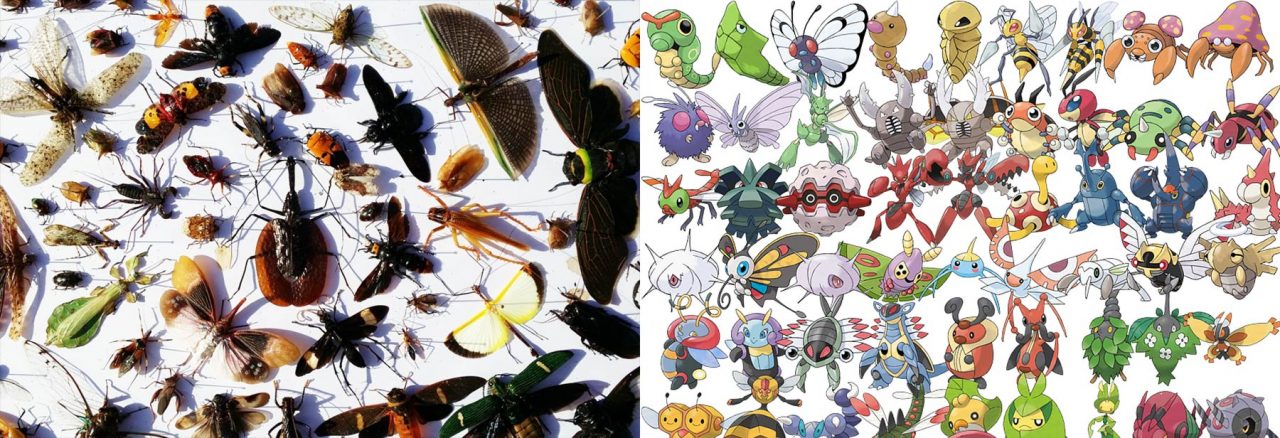
Borneo island is the kingdom of insects and bugs, and it offers far more variety of bugs than what Satoshi saw in his childhood. Some of the insects become an attraction, for example, firefly Christmas trees, Gombizau Honey Bee Farm, butod (sago grub).

The best place to see insects of Borneo is at Borneo Jungle Girl Camp, located in Nuluhon Trusmadi, a 74,736-hectare (747 KM2) Class I (fully protected) forest reserve in Keningau and where Mount Trus Madi, the second highest mountain of Malaysia situated. I had a wonderful time at the camp just two weeks ago.
20 awesome (or weird) things I saw at Borneo Jungle Girl Camp
A trip to Borneo Jungle Girl Camp is a dream vacation for nature lovers, entomologists, and macro photographers. I’ve visited most rainforest of Sabah and thought there would be nothing new. I was wrong. I was awed by the insect world during my 2-day-1-night trip in the forest of Nuluhon Trusmadi. I just share 20 of them below.
1. Jewel Beetles, the gems of rainforest
Many beetles in Nuluhon Trusmadi are endemic to Borneo and some of them are not named yet. Different beetles seem like wearing armoured wings made of various materials such as wood, marble, metals and leather.
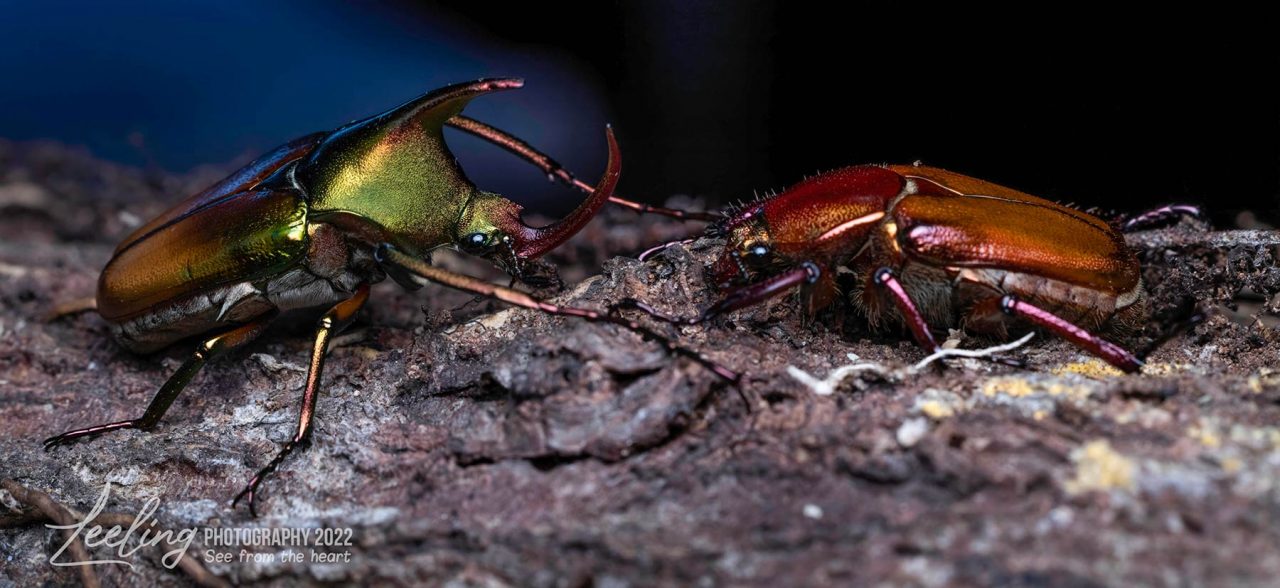
The most remarkable group is the jewel beetles that have a metallic iridescence body. Some rhinoceros, stag, scarab and long-horned beetles of Borneo have such shiny shells. Jewel beetles are the most sought-after trophies by insect collectors and the rare ones can be worth as much as jewelry in black market.
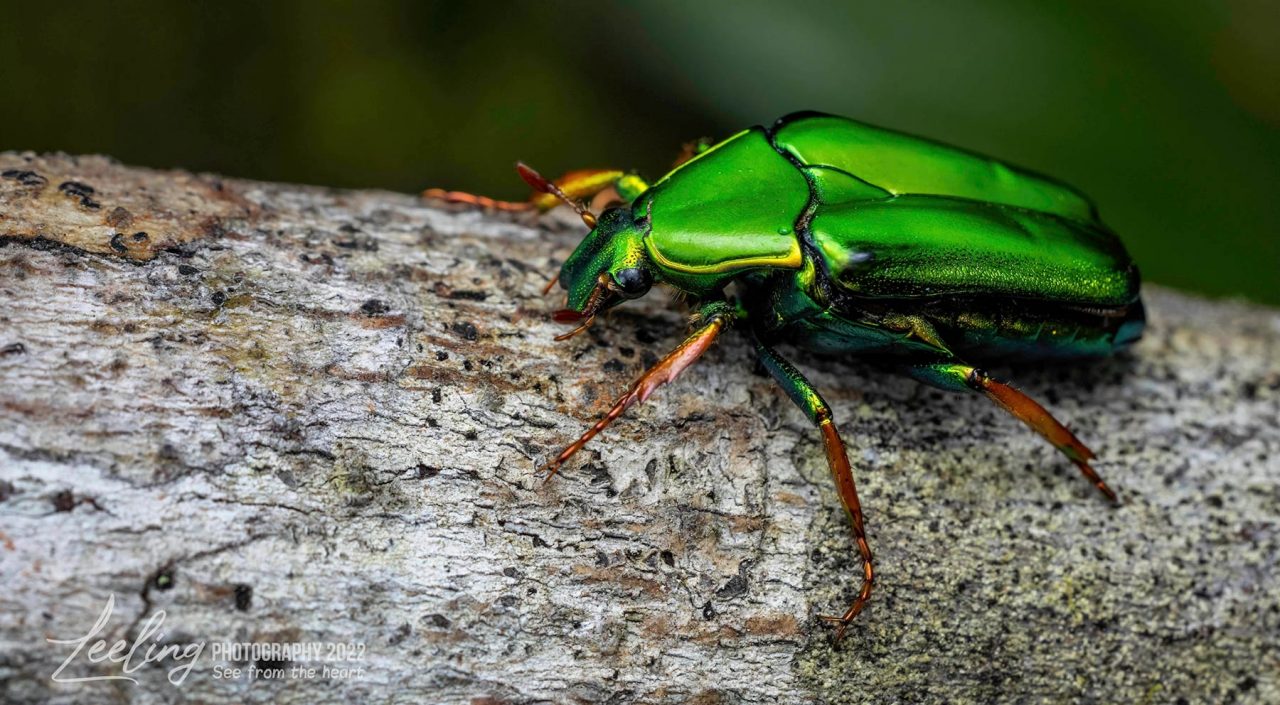
Note: you are forbidden to collect any specimen in the protected forest.
2. Pitcher plant with “eyes”
On the way to the camp, there is a rockface area that is almost fully covered by clumps of pitcher plant. The species of this carnivorous plant is Nepenthes reinwardtiana, which is native to Borneo and Sumatra and is unique for the two “eye spots” on the inside surface of its pitchers. Nepenthes reinwardtiana has many different colour forms. In Sarawak, it’s red colour.
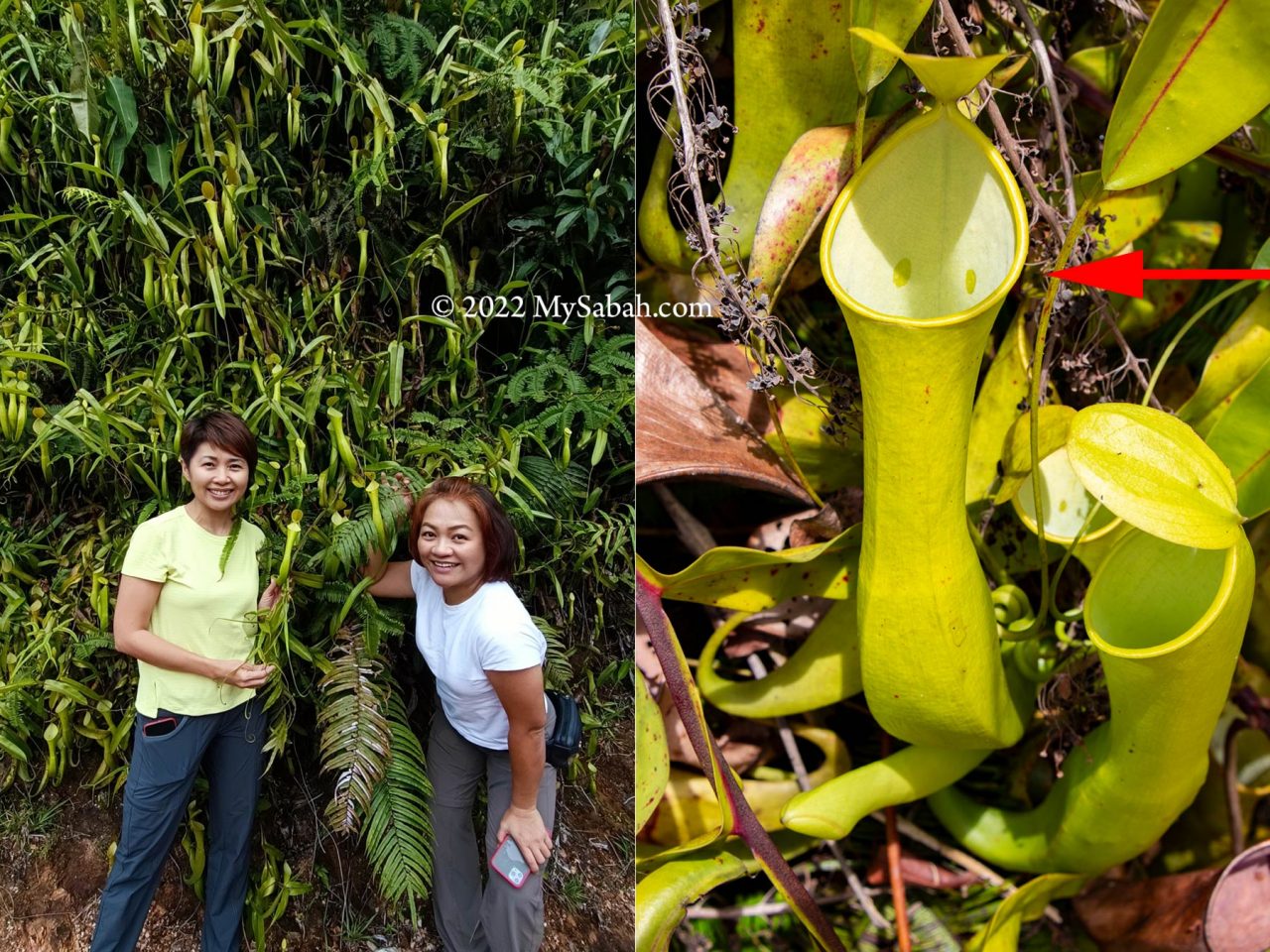
3. Meet the most elegant flying insect
Look like a kite, Moon moth or Luna moth (species: Actias selene vandenberghi and Actias maenas diana) is the most elegant flying insect of Borneo and it has the longest wing tails in insect world. Its swaying long tails are to confuse the predators such as bats, which would target its tails instead of the body. Moth moon is quite rare and I’m glad to see it twice at the camp.
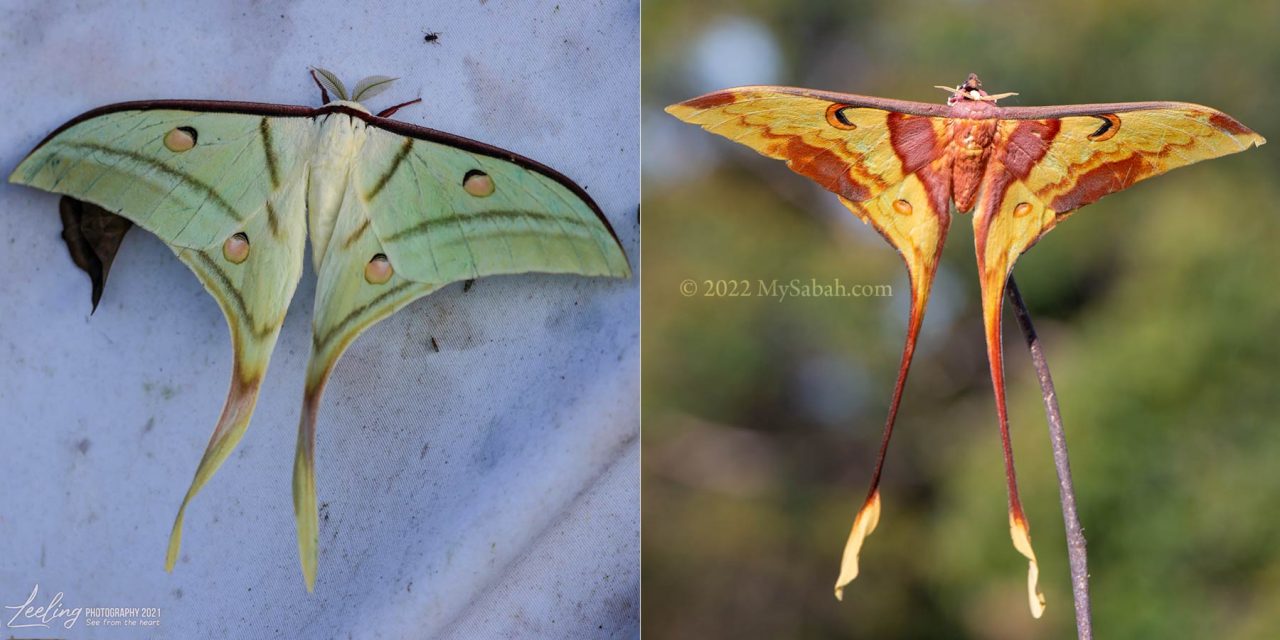
4. Flying dead leaves?
How on earth can some moths be so identical to dry leaves? The best camouflage trick human can pull off is a ghillie suit and it’s not even close to these dead leaf moths. Some moths even have holes on their wings to mimic a decayed foliage perfectly!
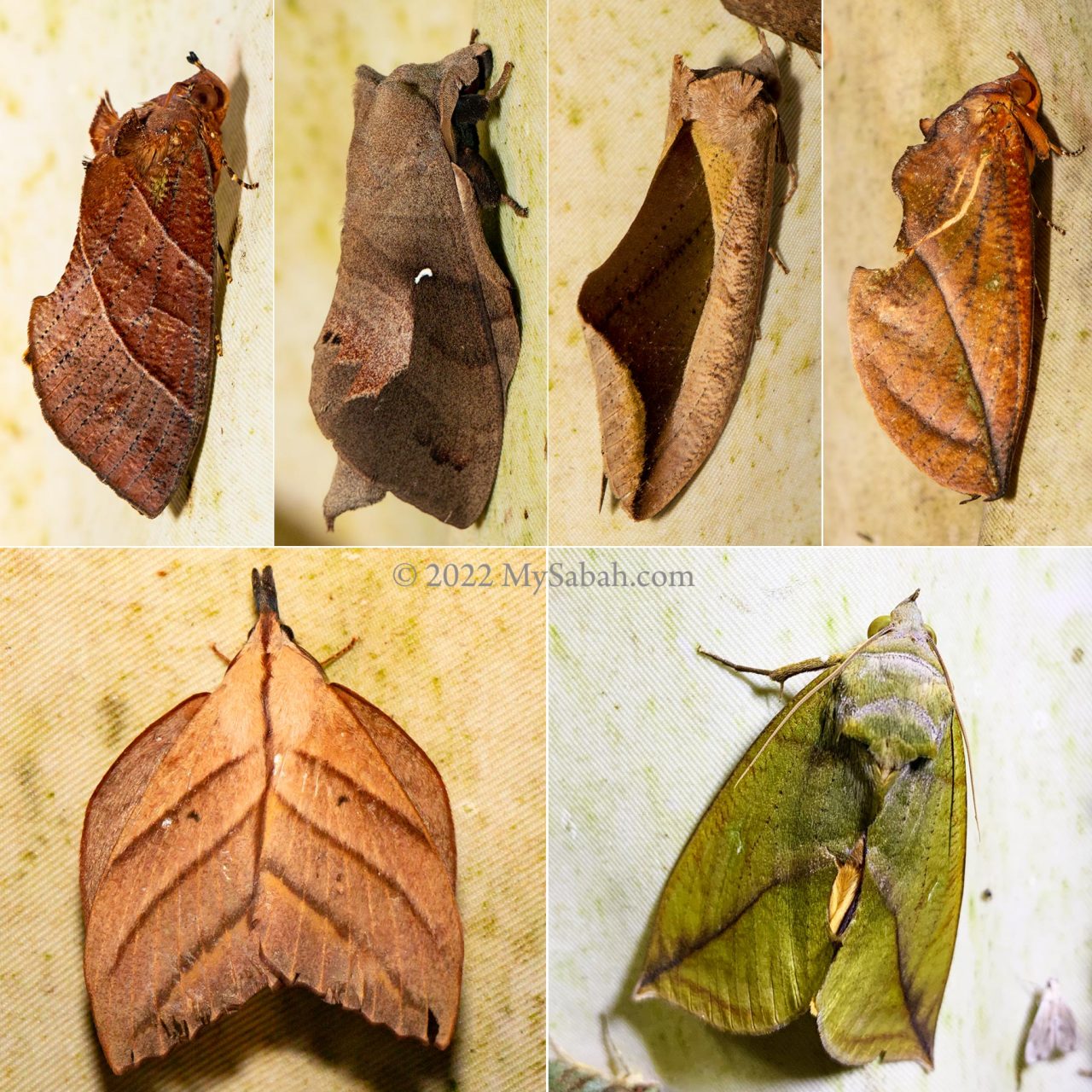
5. Praying Mantis, the Master of Stealth
The lethal claws makes Kungfu mantis the apex predator of the insect world. Some species take it to next level by being stealth to ambush their prey. They even rock back and forth to imitate the movement of leaves in wind. Praying mantis also can turn their heads 180 degree to scan their surrounding. Insects in range only can pray for their lives.
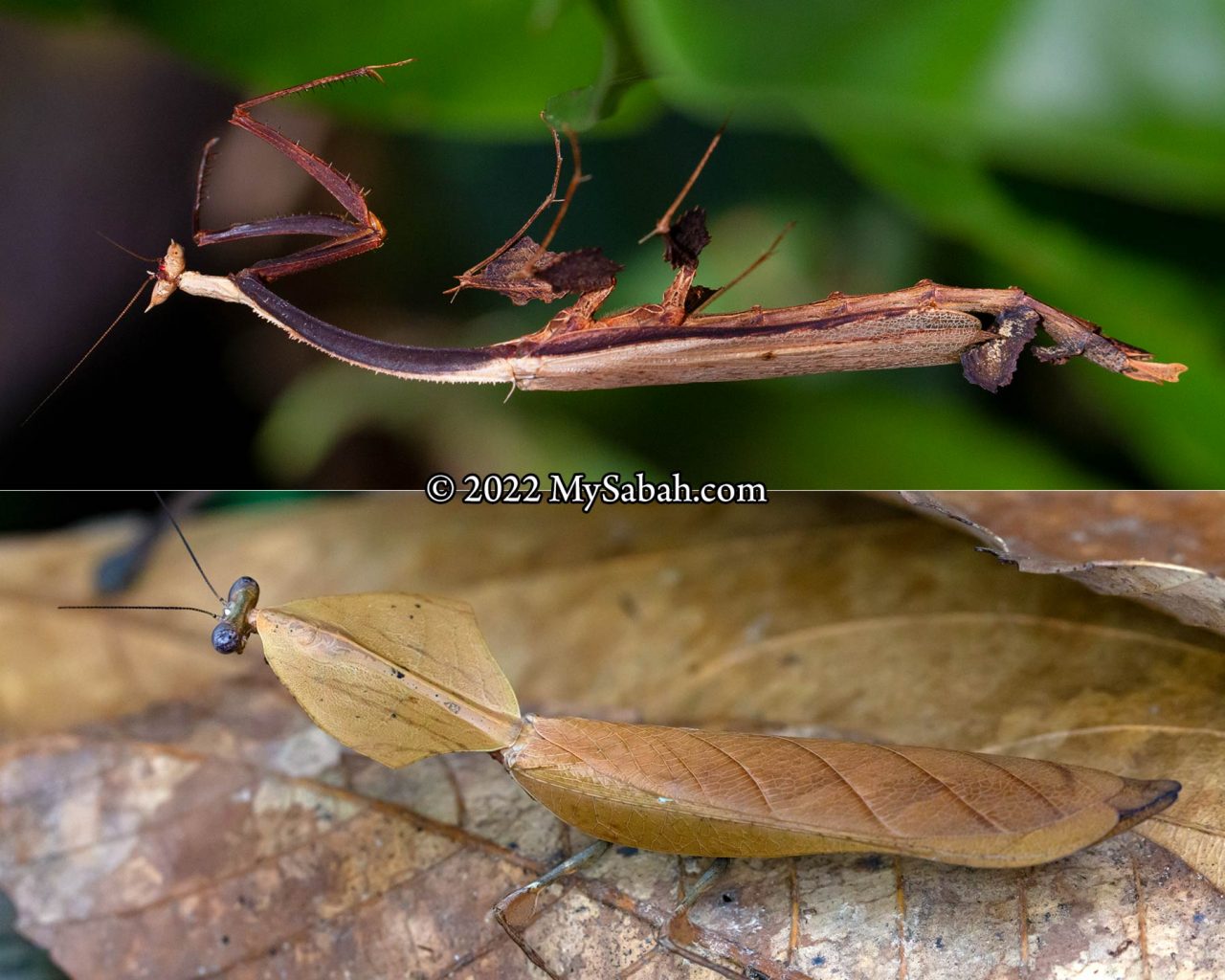
6. Frog with horns. Is it evil?
Before the trip, I haven’t seen any horned frogs that are endemic to Borneo, so it’s high on my bucket list. Believe it or not. In a rainy evening, one of them just jumped to me in the camp. The one I met is known as the rough-backed horned frog (species: Borneophyrs edwardinae). It’s a brown-coloured medium-sized frog with horns above its eyes. Actually the “horn” is a drawn-out, slender, triangular projection from the eyelid. Horned frogs don’t intend to look like a devil, they need that leaf-like horns to hide among foliage.
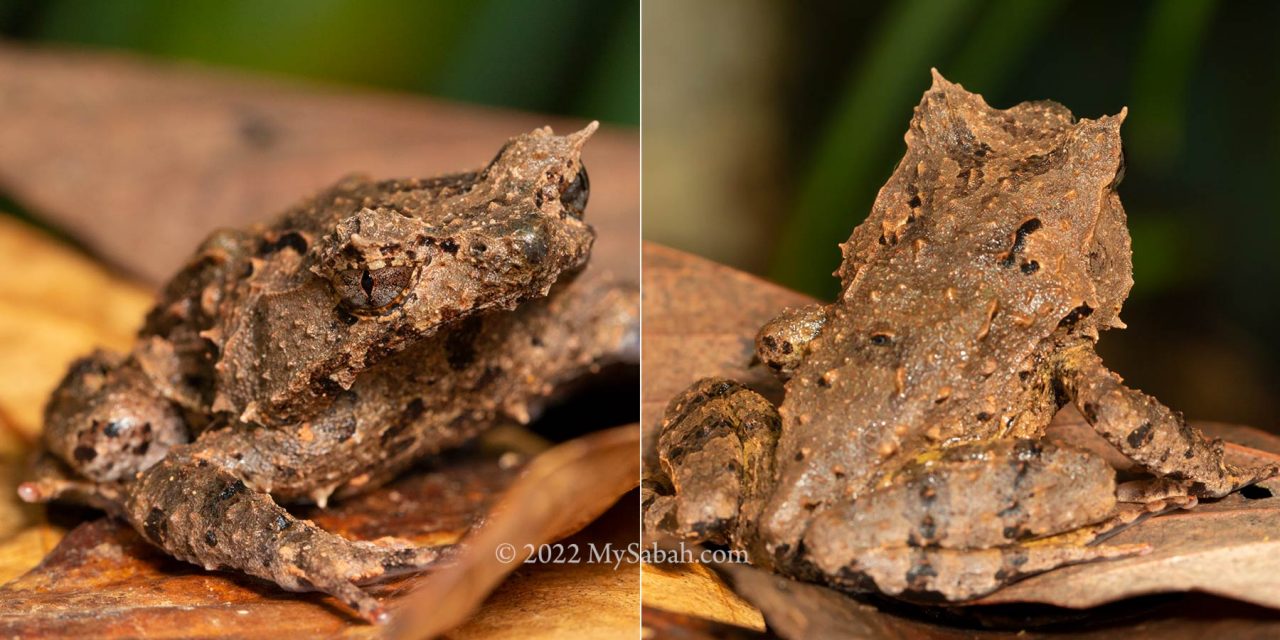
7. Hide and seek with leaf mimic pygmy grasshoppers
Though this insect is tiny and not as flamboyant as other famous insects, it’s a superstar among entomologists who love extraordinary insects. There are only four Borneo species of leaf mimic pygmy grasshoppers and you can find 2 or 3 of them just 15 metres outside the camp!
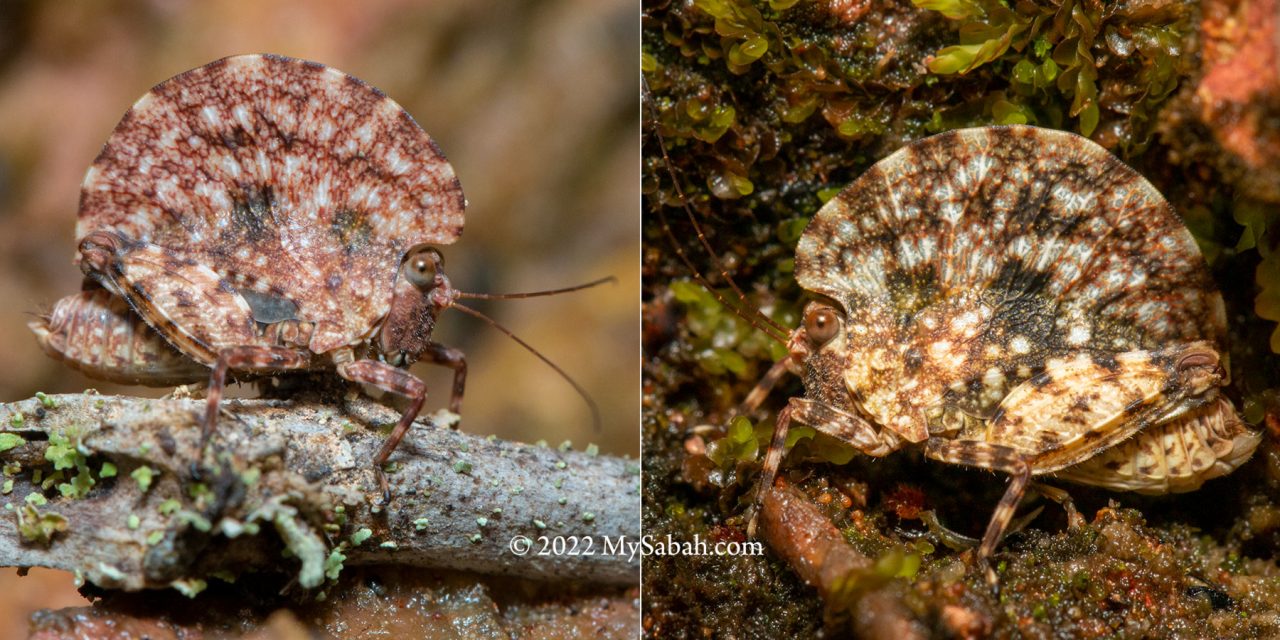
This is exciting as they have very limited distribution. However, it’s fairly hard to spot them as their colours blend into rock faces where they feed on algae. Put them under the magnifying glass and you would see something like a Sail-Backed Dimetrodon (dinosaur).
8. Moth that deceives with pictures
Besides camouflage, moths have another mean to fool predators. Many of them have “faked eyes” on their wings so they look like an owl or snake head.
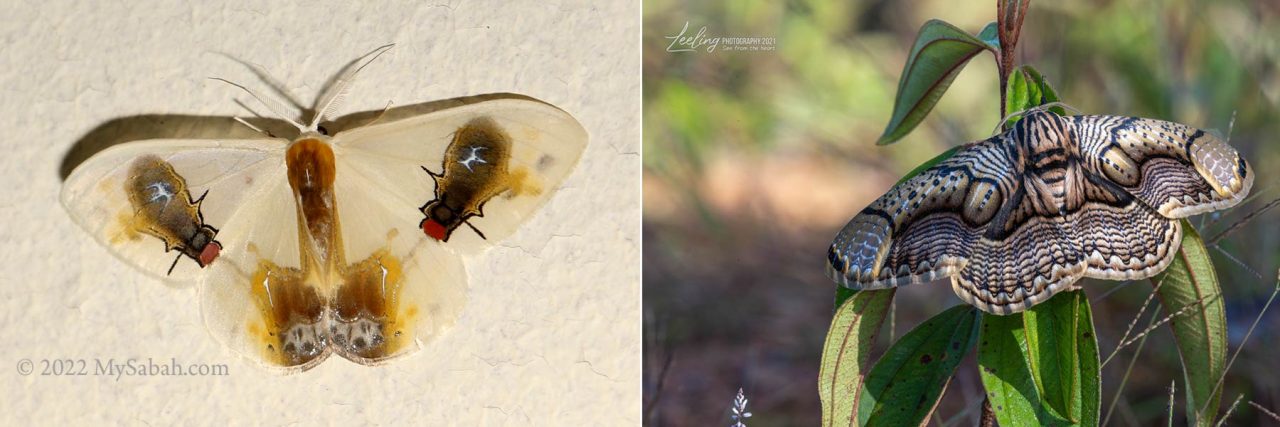
The funniest strategy is employed by Macrocilix maia, a moth with wings that feature a picture of two flies feeding on a poo, to show that it is not delicious. It’s always jaw-dropping to see the work of nature. Who knows in future we would find a moth with a painting of Mona Lisa on its wings.
9. Misty cloud forest is a heaven for insects
Borneo Jungle Girl Camp is located about 1,170 metres above sea level, a highland zone dominated by lower montane forest (cloud forest). The dense forest is showered by fog, so the environment is cooling and humid, the most ideal habitat for insects, as many of them migrate uphill due to global warming and pesticides.
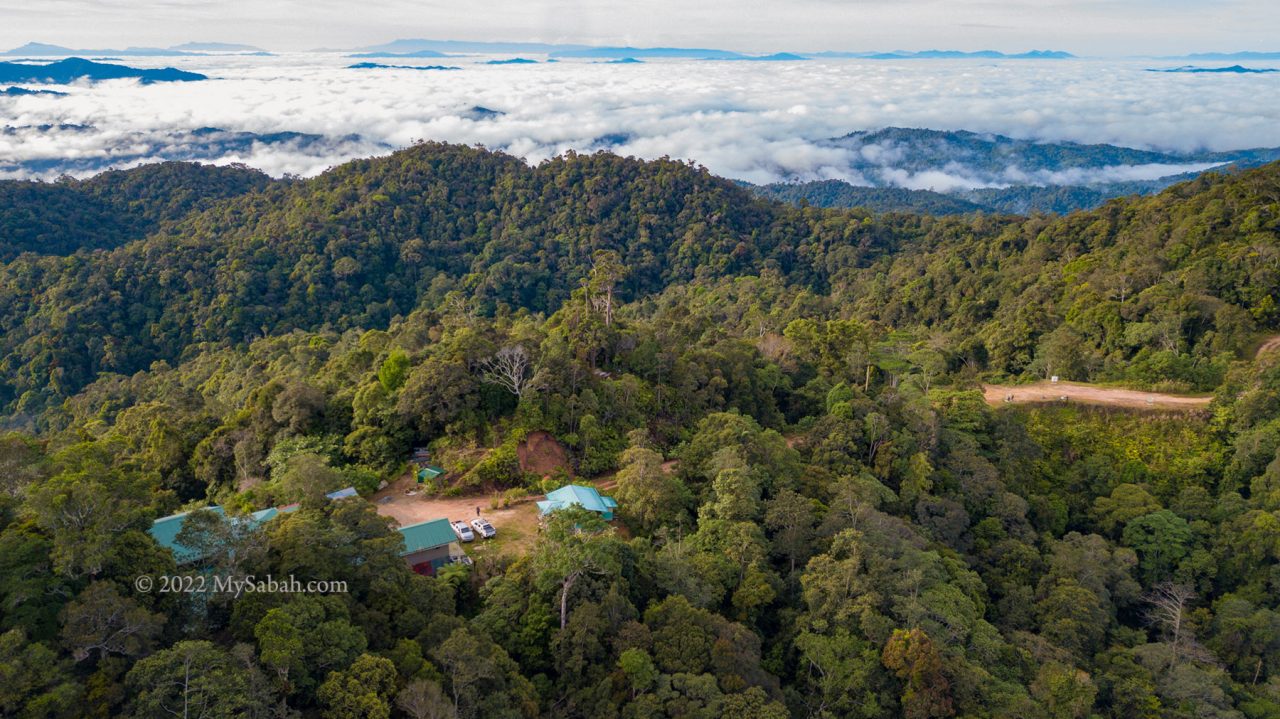
Even if some tourists are not fond of bugs, they still come here for the refreshing air and nature touch.
10. Light trap, a magnet to insects
One of the fun activities at the camp is to check out the light traps at night. You know insects are attracted to light. Four light traps are set up on four corners of a ridge in the evening, then we went for dinner and waited for the insect show. We might lure some rare bugs out of the wood without searching hard.
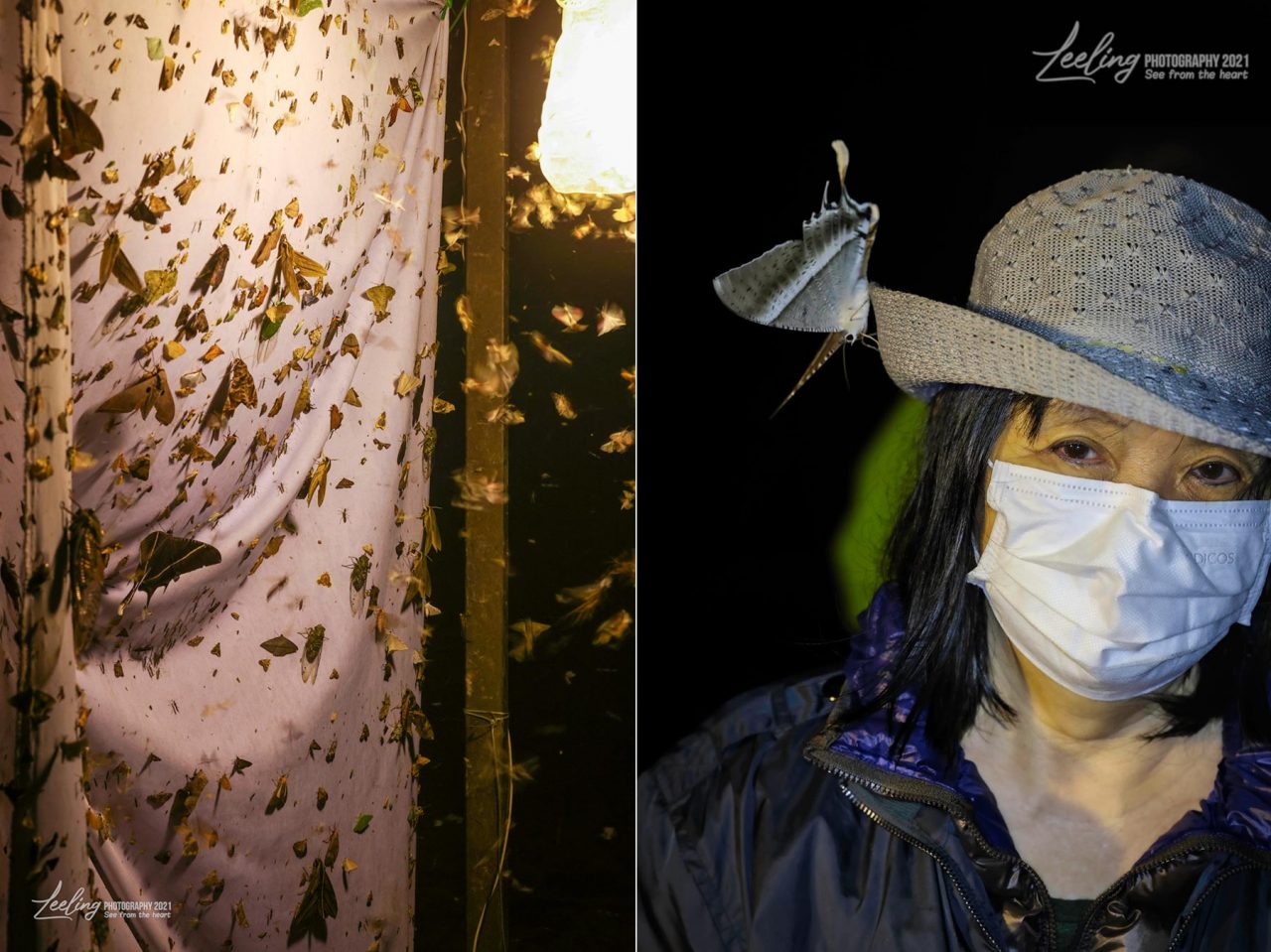
By the time we came back around midnight, the screens were already blanketed by hundreds of nocturnal bugs of different colours, sizes and shapes. Most of them are moths, with stick insects, beetles, mantis, cricket, grasshoppers, cicada, and katydid among them. Jimmy the camp manager, smiled and said, “in peak season between March and May, the screens would be totally covered and swarmed by insects. You couldn’t even walk near them.”
11. Moths are more diverse than butterflies
The light trap is like a stage for a fashion show by moths. Moths form a very large group, with about 10,000 species in Borneo, in different sizes, colours and forms. You are lucky if you see the gigantic Atlas Moth (species: Attacus atlas) with a wing span of 25 cm, which is among the biggest insects in the world.
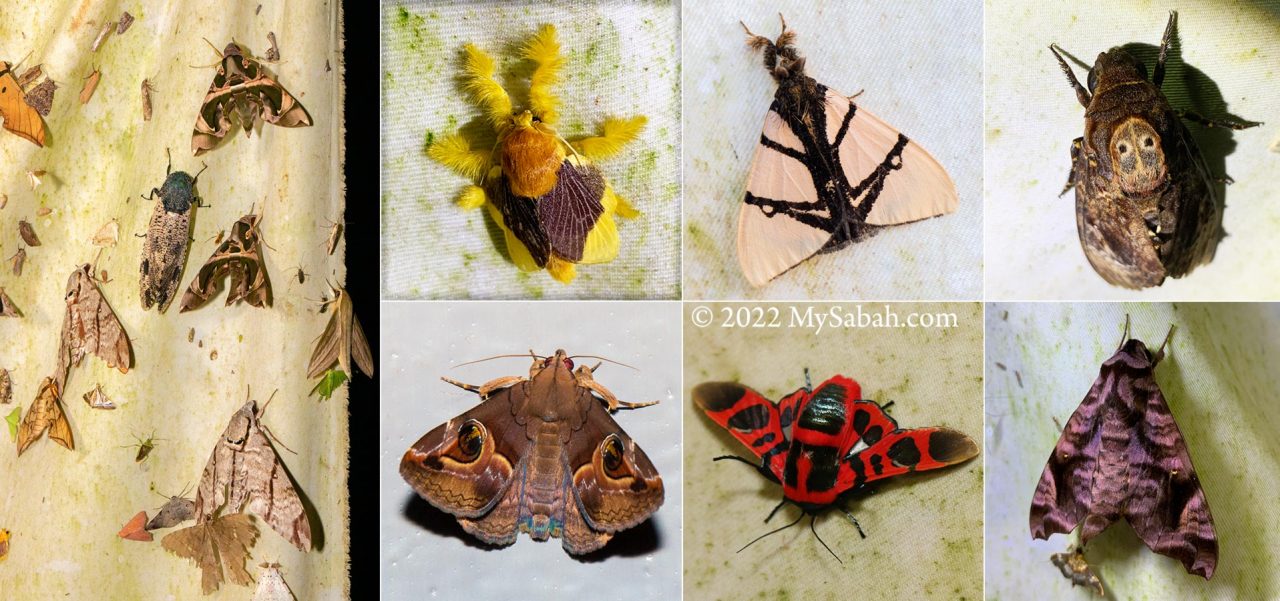
Hawkmoth is a common visitor too, it’s nicknamed as Jet because of its hawk-like aerodynamic shape and super flying speed of 50 KM/H, the fastest in the insect Olympic. Some moths look like they are wearing a fur coat or Halloween costumes.

12. Crab + Spider = ?
You know crab and spider have eight legs but they are totally different creatures. If you can “merge” them, it would look like Crab Spider, Jewel Spider, or Parallel-spined Spiny Orbweaver Spider (Gasteracantha diardi). Despite its intimidating appearance, this spider is harmless to humans.
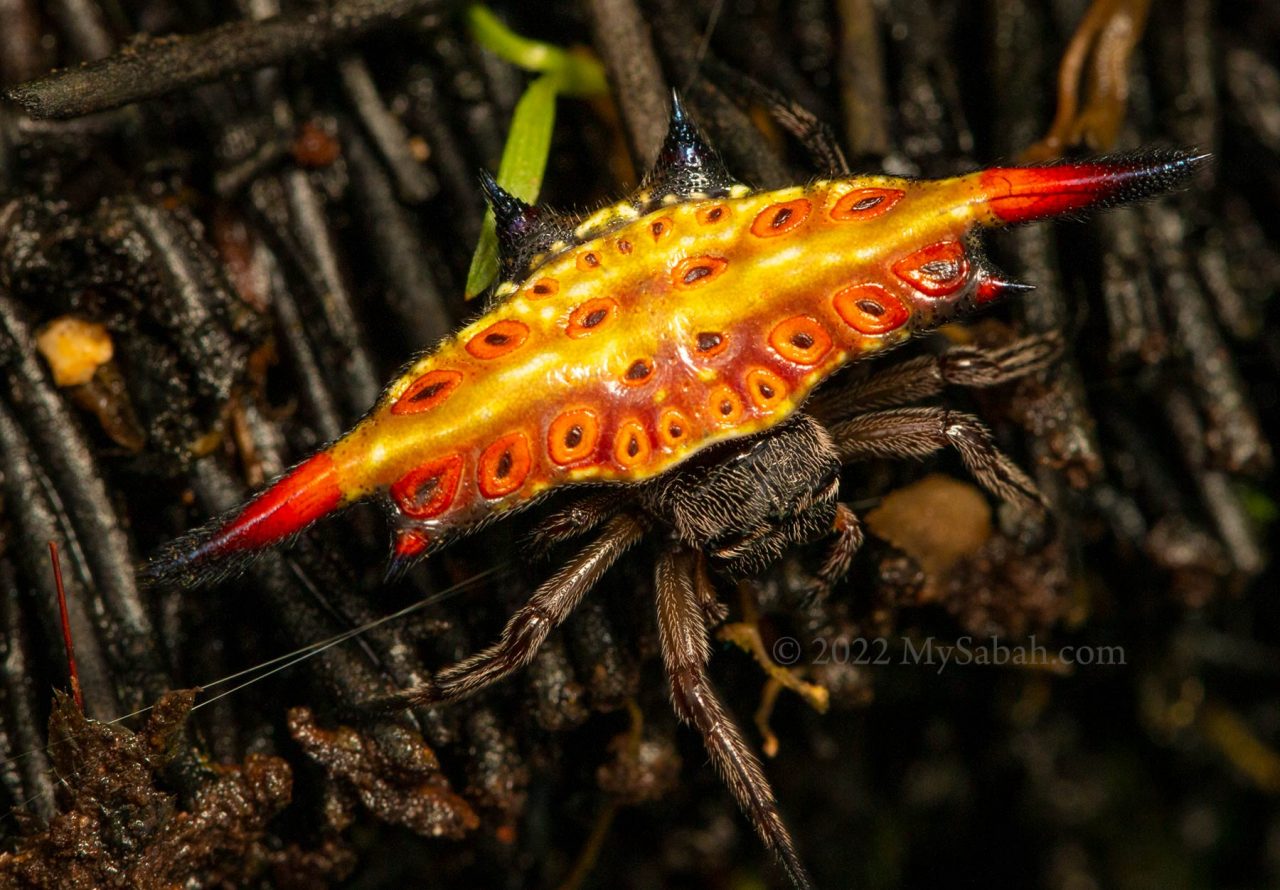
Crab spiders fluoresce blue under ultraviolet light, which is to simulate the blooming flowers for luring the insects that use UV vision. You can bring some crab spiders to a disco night to see their cool UV effects.
13. Bird’s dropping that moves
Besides disguising themselves as a dead leaf or the eyes of predators, butterflies and moths have another camouflage tactic called “masquerade,” a defense that helps them look like inedible objects, such as twigs, stones or bird droppings. Bird’s dropping caterpillar is a great example of masquerade, which increases their survival rates by three times.
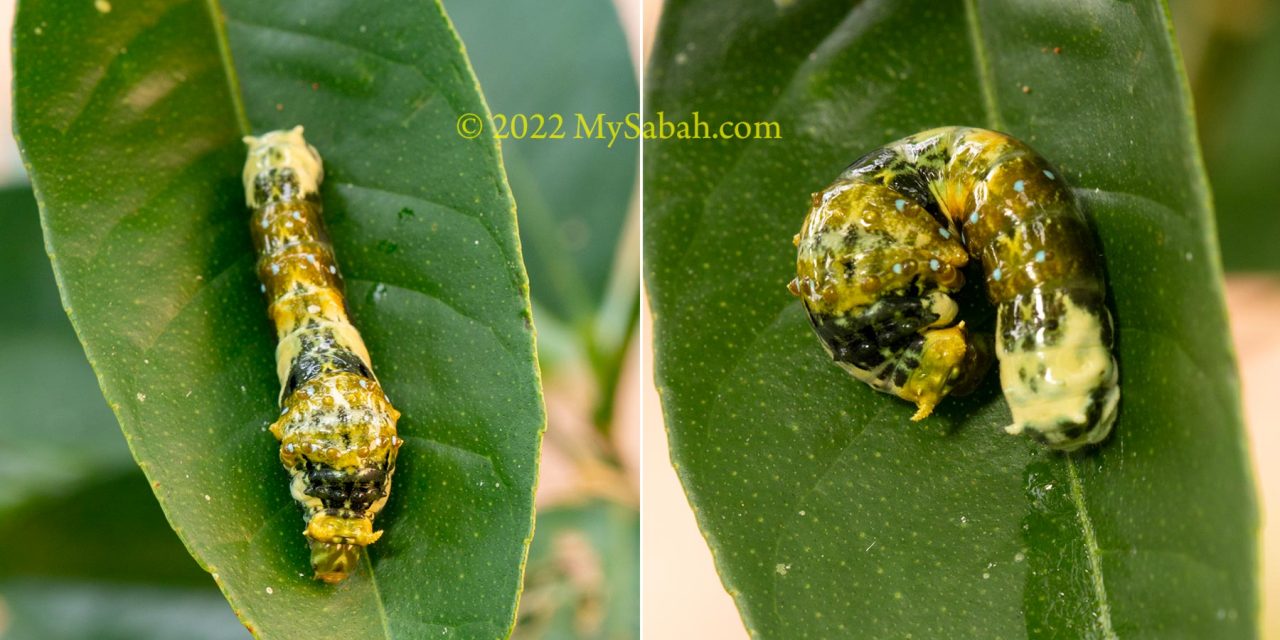
Birds have better eyesight than humans, so it’s difficult to fool them. Therefore, a knobbly body with the correct poo colours isn’t enough. Some bird’s dropping caterpillars use bent posture to copy the look of a dollop of excrement.
14. Searching for peace and a sense of purpose? Go Stargazing
City people would think a description like “starry sky studded with diamonds” is just an exaggeration in the romance novels, until they visit a place that has no light and air pollution.
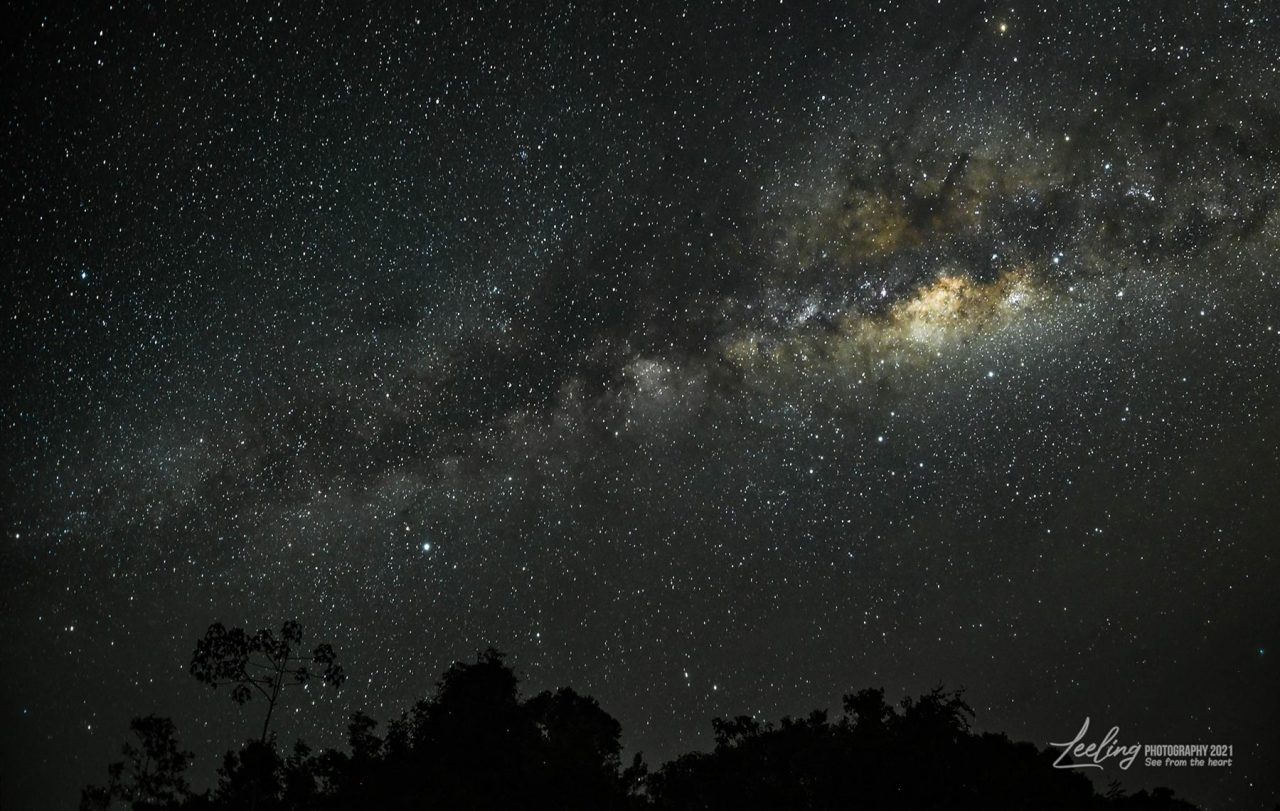
Just come to Nuluhon Trusmadi during moonless days and witness it yourself. To see the Milky Way in its brightest time, the best months are between April and September.
15. Butterflies also loves smelly stuffs
Whenever we talk about butterflies, usually what comes to our mind is a picture of a butterfly foraging on a fragrant flower. What if I tell you that butterflies also love dung? On the way to the camp, I saw a group of butterflies sipping pee on the ground.
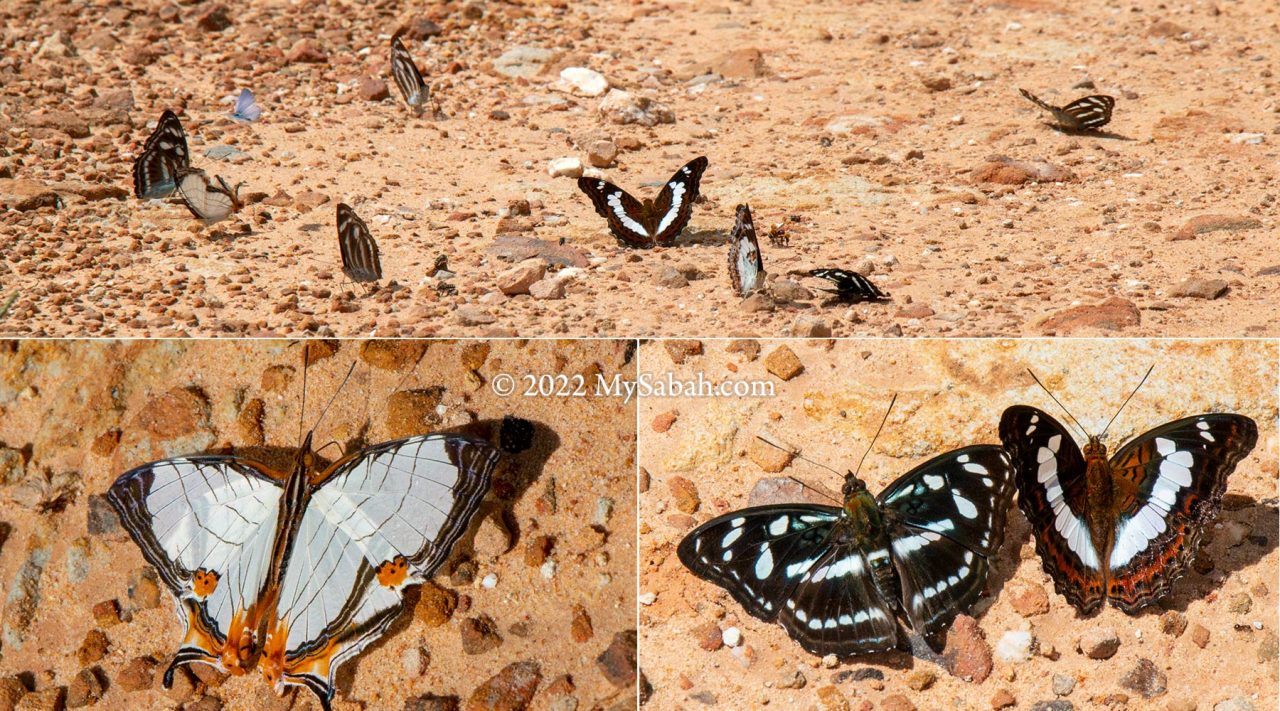
In addition to the sweet nectar, butterflies also need some minerals (especially salt) and nutrients that are not available in flowers. You guessed it right. They obtain these from the pee and poo left by other animals. This strange behavior is called puddling, and is mostly seen in male butterflies, which need the materials for their reproduction system.
16. Stick insect the walking stick
At Borneo Jungle Girl Camp, don’t be surprised if you see a walking twig. Stick insect, as the name implies, is an insect that resembles a stick or twig, and it’s the longest insect in the world. Phobaeticus chani or Chan’s megastick, the second longest insect in world’s record (567 mm or 22.3 inches), is from Sabah. Their eggs are large and some village kids eat them like a snack.
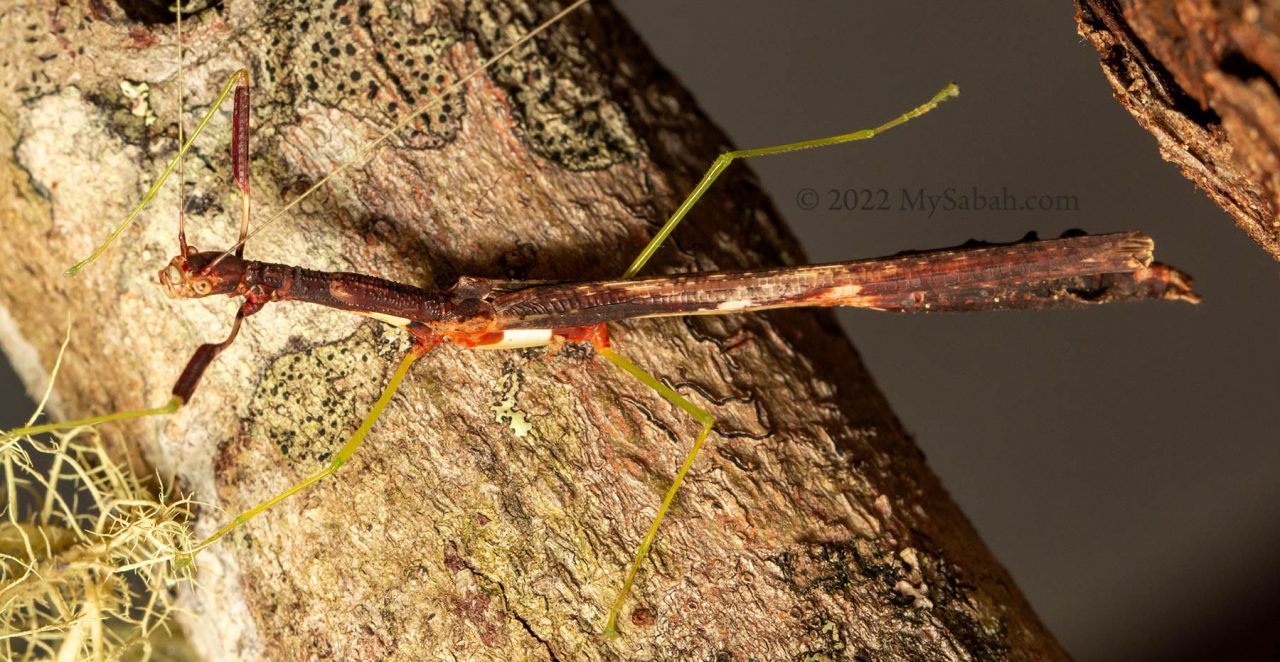
Some stick insects at the camp still wait to be named. Therefore, you can discover the new species there and name the ugly ones over your mother-in-law or boss. Some stick insects are capable of laying eggs without the need to mate with males to produce offspring. Crazy huh?
17. Birdwatching
Very few people know about this so it’s almost like a little secret. The montane forest near the camp is a great birdwatching site. Avid birders would be thrilled to see Bulwer’s pheasant, Bornean Pitta, Whitehead’s Broadbill, Red-naped Trogon, Red-bearded bee-eater and Black-and-yellow broadbill, just to list a few rare or famous ones.
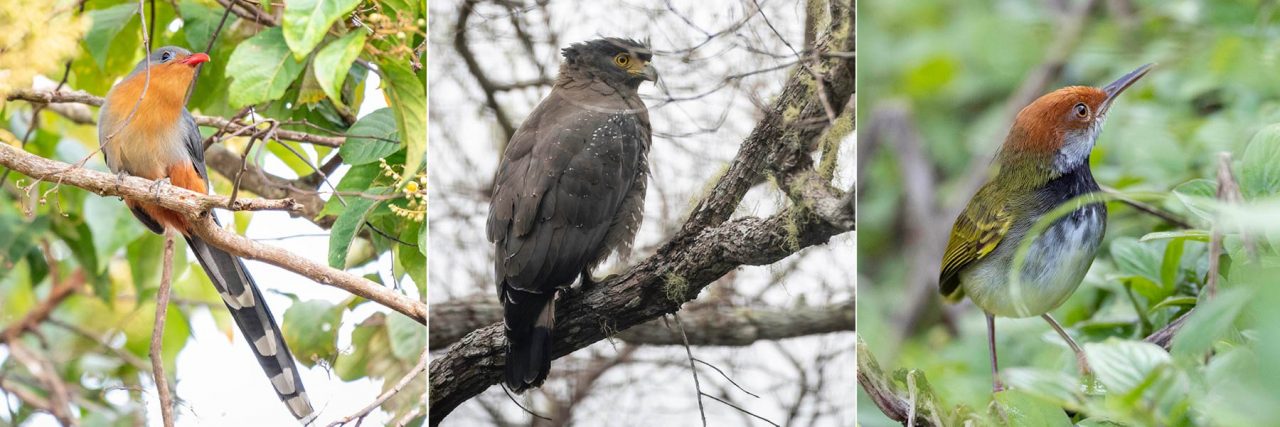
If you are too lazy to walk, Temminck’s Sunbird, Bornean Bulbul and Bornean Laughing-thrush are always wondering near the camp.
18. Monkey loves bugs?
Monkey is omnivorous and banana is not its only food. But it’s only in my last trip that I first saw a pig-tailed macaque eating insects as a source of protein. It’s quite picky and only choose the big and juicy ones. The crunchy cicada sounds like its favourite snack and followed by jet moths.
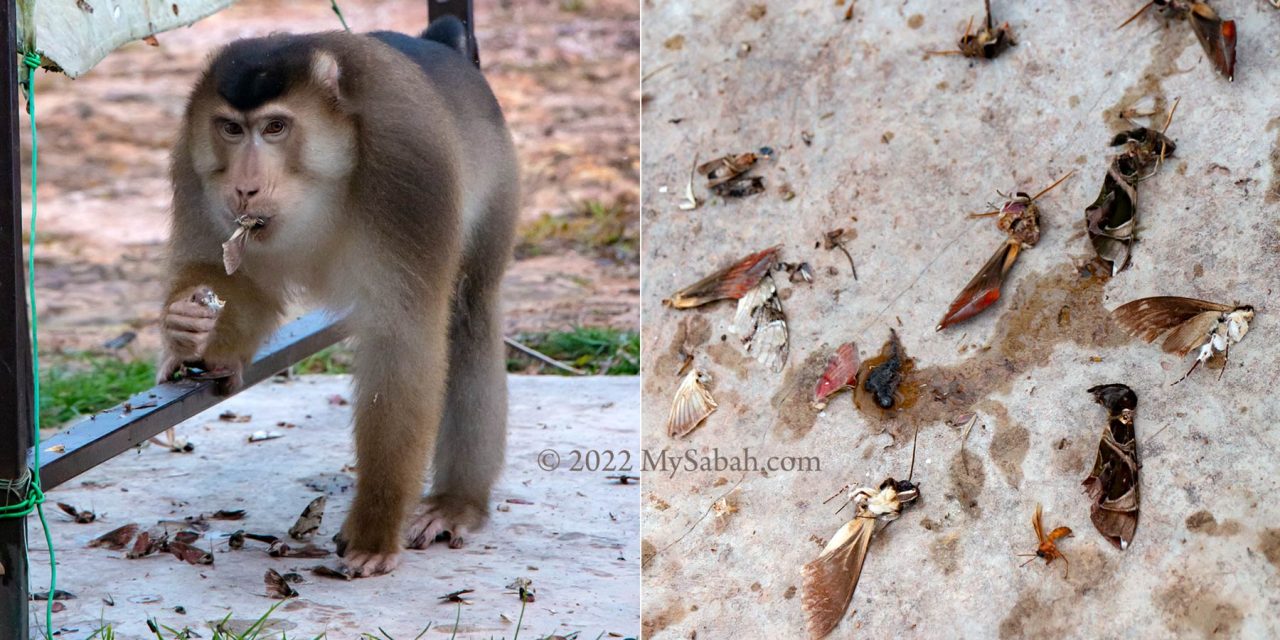
This monkey is one of the four macaques that always hang around the camp. They are probably old beta males that are expelled from the troop and form their own bachelor group. As a matter of fact, insects are nutrient-efficient compared to meat, and they may be the solution for the world hunger problem. It’s safe if our close cousins can eat it.
19. Cicada, the singing orchestra of rainforest
For the sound of rainforest, cicada is always the lead singer as it can produce a noise over 100 decibels, enough to cause hearing loss if you leave it singing next to your ears for long hours. The most interesting species is Pomponia merula, which is also known as Six O’Clock Cicada because they start buzzing at six. I want one as an alarm clock.
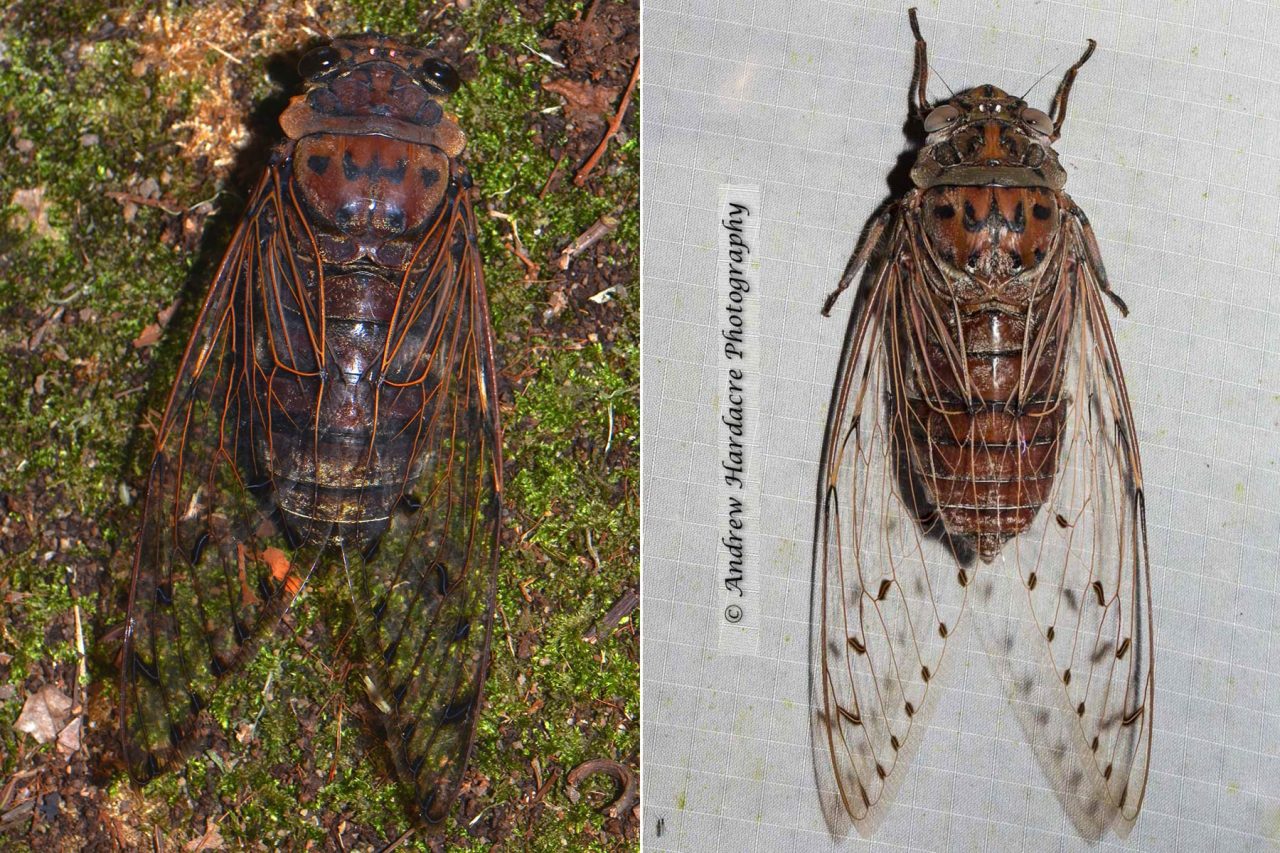
Their counterpart in Peninsular Malaysia is 7 O’clock Cicada (Megapomponia imperatoria), which sings at 7pm (because sun sets 30 minutes slower in West Malaysia).
20. Borneo Jungle Girl Camp is more than a camp
After all the exciting activities in the forest, I only need a hot shower, some nice food and a cozy bed. I thought I was probably expecting too much from a jungle camp. A camping tent is more realistic in such a remote jungle. To my surprise, Borneo Jungle Girl Camp provides all these. They have clean and spacious bedrooms, and bathroom with hot shower. I have absolutely no problem (in fact, would love to) to stay over a month in the camp.
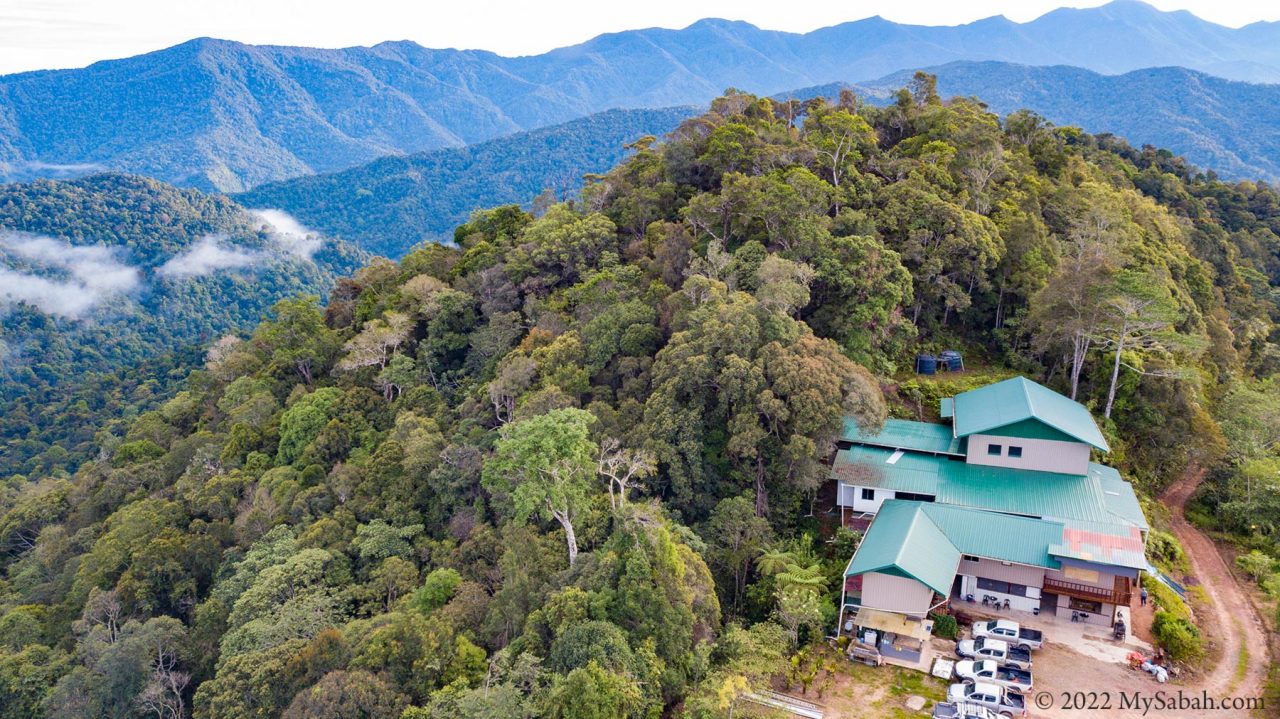
The food was yummy too and the cooling weather there boosted my appetite. During my stay, I had nasi lemak, BBQ, steamboat and even seafood. 4G network is available at certain spots in the camp. Electricity is available from 6pm to 6am.
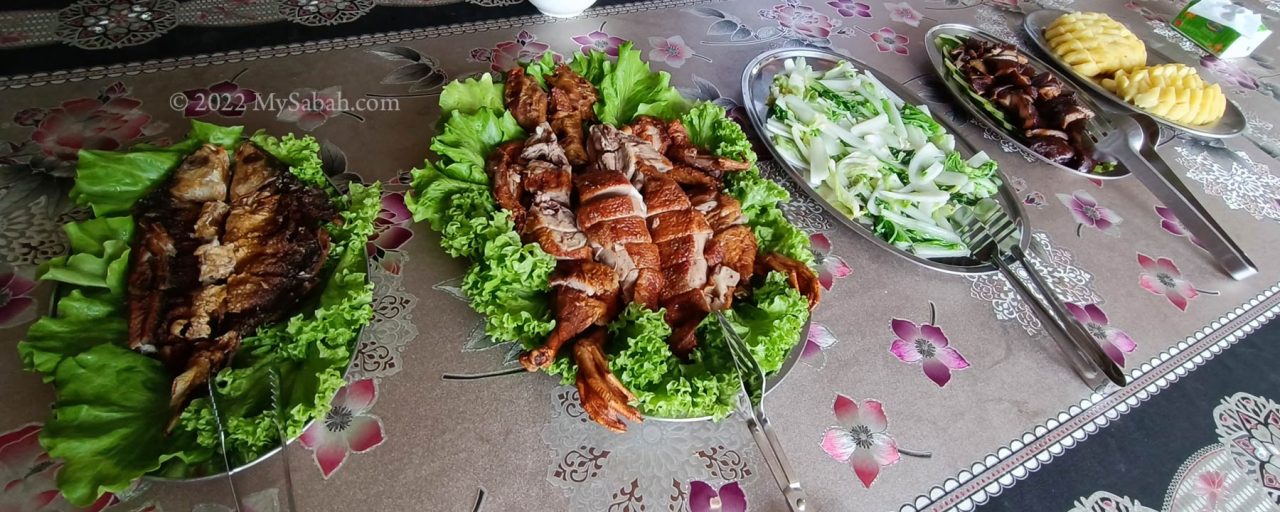
About Borneo Jungle Girl Camp
Borneo Jungle Girl Camp was established in 1986. With decades of experience in entomology, the founders believe that Nuluhon Trusmadi forest is the most ideal location for entomology studies and entotourism. During peak season, over 5,000 species of insects can be recorded at the site.
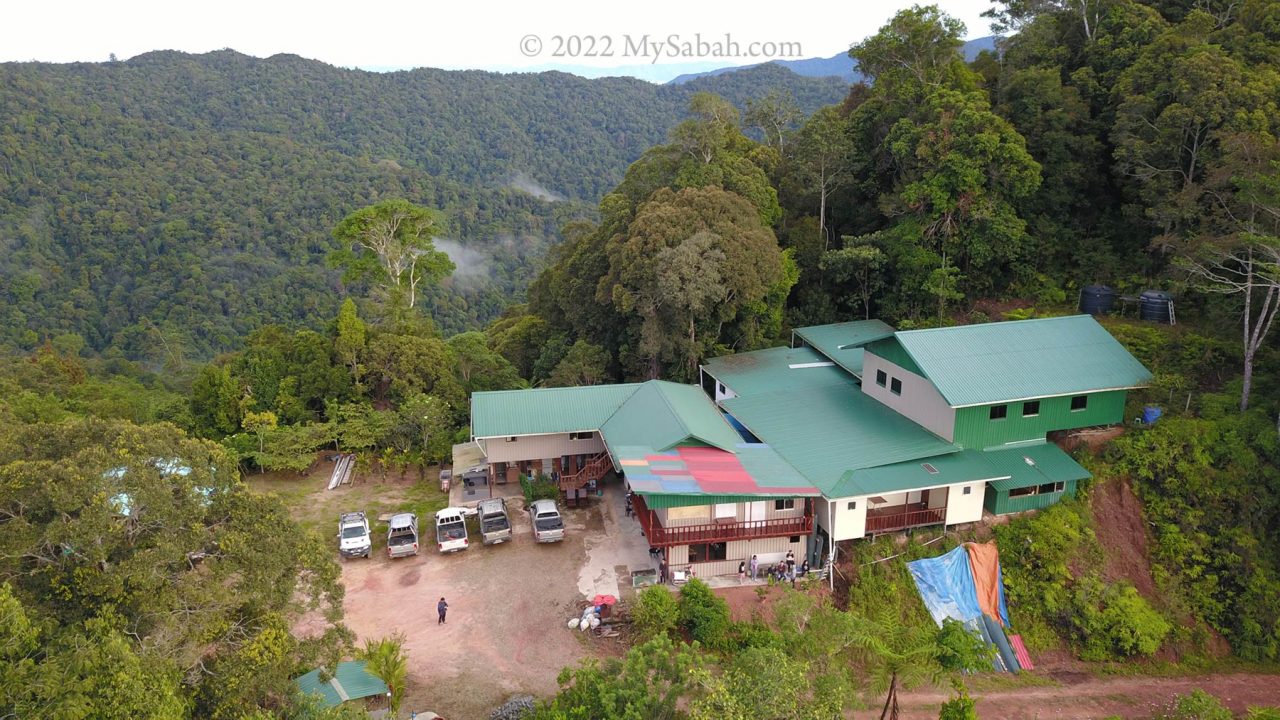
Therefore, the founders spent most of their personal saving to fund the construction of the entomology camp, and they obtained the operation permit from the Sabah Forestry Department in 2006 for tourism, education and conservation on entomology. After a few phases of upgrade over the years, the humble camping tent is developed into a decent lodge complete with accommodation, dining hall, water and electricity, and other amenities that can host up to 60 guests. The camp has been an academic destination for hundreds of students from overseas universities in China and Japan, as well as local tourists who just want to chill.

You can contact the camp or follow their social media for more information:
Phone / Whatsapp: +60 16-4106078
E-mail: trusmadientomology@gmail.com
Website: www.trusmadientomology.com
Facebook: @trusmadientomologycamp
Instagram: @trus_madi_entomology_camp
Tour and Fees
As Borneo Jungle Girl Camp is situated in the fully protected Nuluhon Trusmadi forest, entry permits are required for visitors and vehicles, so walk-in tourists are not accepted. You can book a tour with Borneo Jungle Girl Camp and they will get the permit(s) for you. The following is the a list of the fees (USD1.00 is approximately RM4.40). Note: though these prices are valid until the end of 2022, they are subject to change:
| Nationality | Entry Permit (per person) | Entry Permit (per vehicle) | Camera |
|---|---|---|---|
| Malaysian | RM15 per day | RM100 | RM5 |
| Non-Malaysian | RM30 per day | RM100 | RM5 |
Accommodation (meals included)
Room rates per head on twin-sharing basis:
| Visitor Type | Standard Room | VIP Room | Chalet |
|---|---|---|---|
| Malaysian | RM300 | RM400 | RM450 |
| Non-Malaysian | USD120 | USD170 | USD190 |
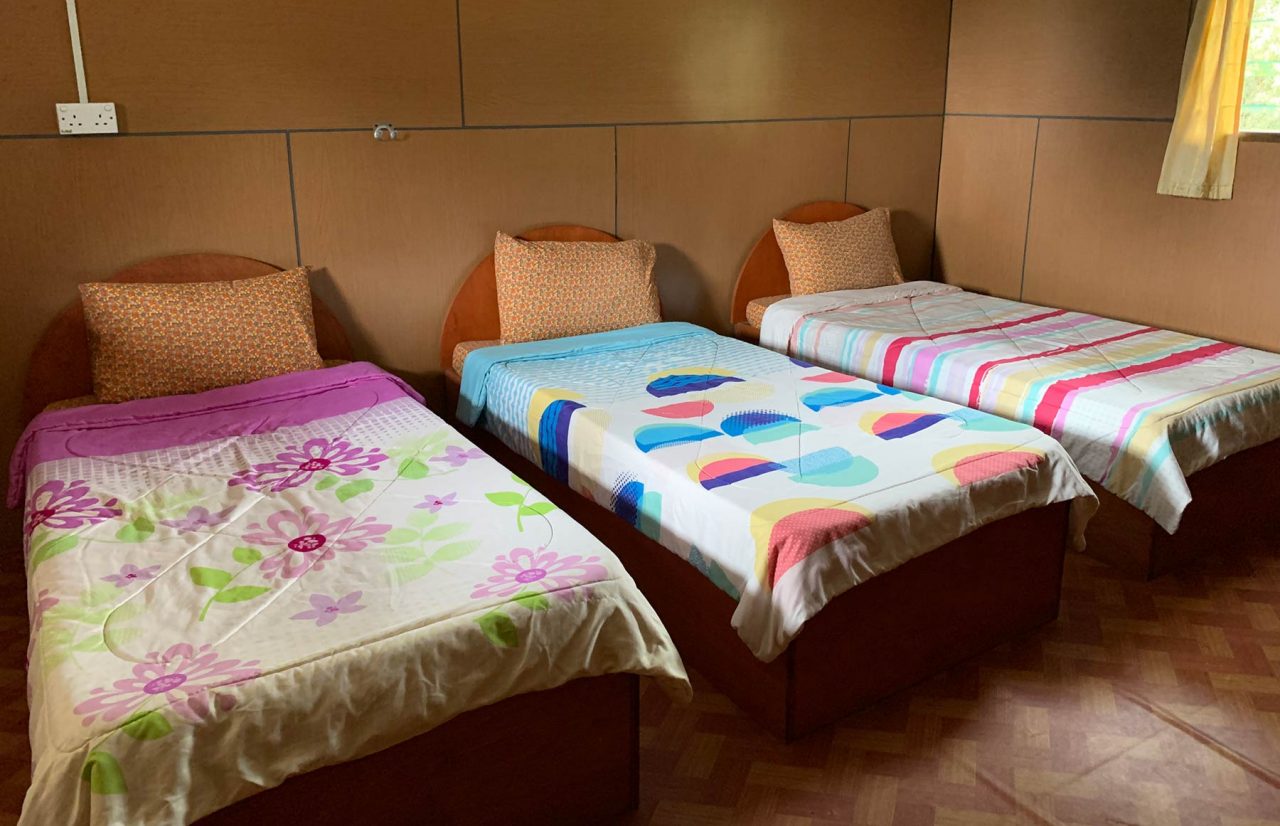
The temperature at the camp can drop to between 10 and 16°C (50 – 61°F) at night, so bring some warming clothing such as a windbreaker. Daytime temperature is between 28 to 30°C (82 to 86°F). To see more wildlife, spending two or more nights is recommended.
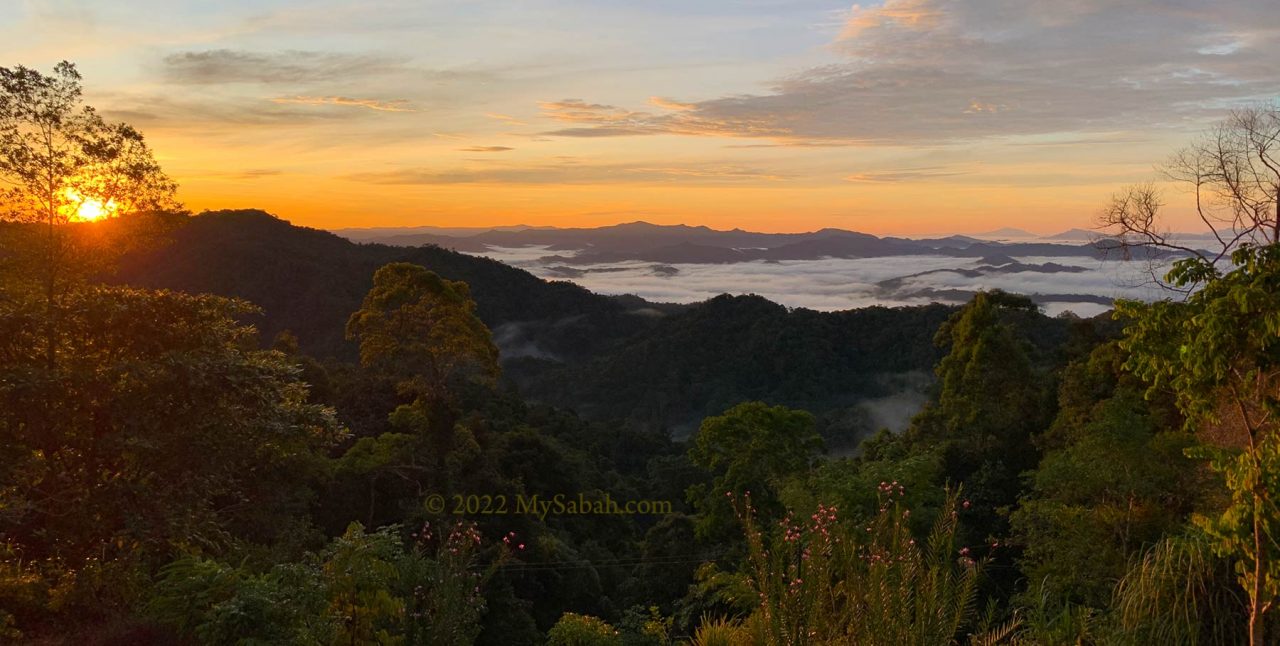
How to get there
The distance between Kota Kinabalu City and Borneo Jungle Girl Camp (GPS Coordinates: 5.443048041703671, 116.45120820208399. See Location Map) is about 160 KM, which takes 3 hours and 30 minutes to travel one way. The first 128 KM is asphalt road with fair condition. The last 32 KM to the camp starts at the junction to Jalan Ranggom Kepayan in Apin-Apin (Keningau), which is an old logging road (mainly gravel road) only accessible by four-wheel drive.
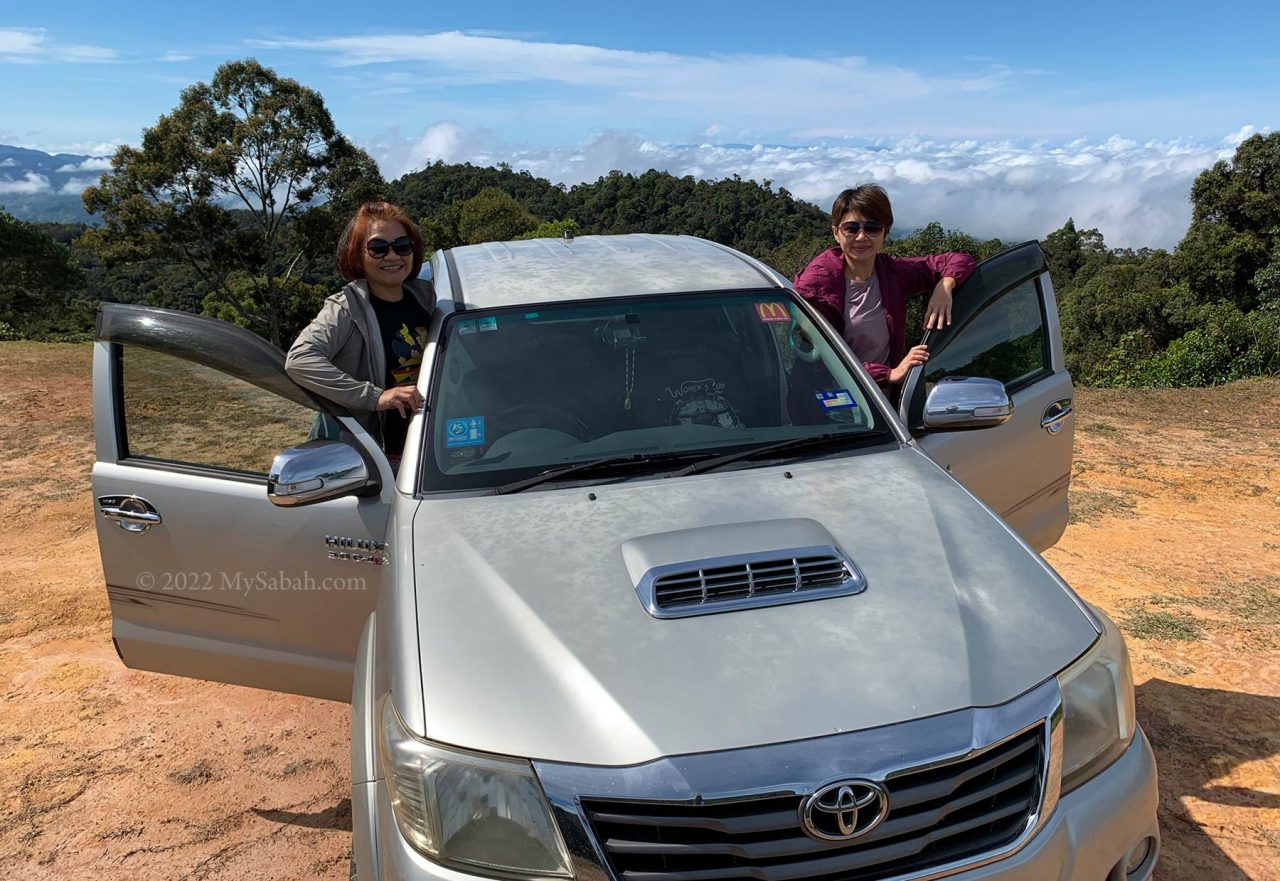
Don’t worry if you don’t own a 4WD. You can request the camp for a 4WD return transfer for a fee of RM450 per car (can fit in up to 4 tourists). You can park your car in the village of Apin-Apin, and they will pick you up there. If you want them to fetch you in Kota Kinabalu, the fee is RM1,100 (round trip) per car.
Things to Bring
- MyKad / Passport
- Cash
- Extra clothing (overnight trip)
- Jacket or warm clothing
- Raincoat / poncho / umbrella
- Drinking water
- Plastic bags (for soiled clothing)
- Toilet paper
- Toiletries (toothbrush, tooth paste, face wash, etc.)
- Towel
- Power bank (portable charger) and phone charging cable
- Snacks / energy bar
- Sunblock lotion
- Hat
- Sandals / Slippers
- Torchlight
- Camera (with spared batteries and memory cards)
- Personal medicines
- Optional: swimwear, binocular, anti-leech socks
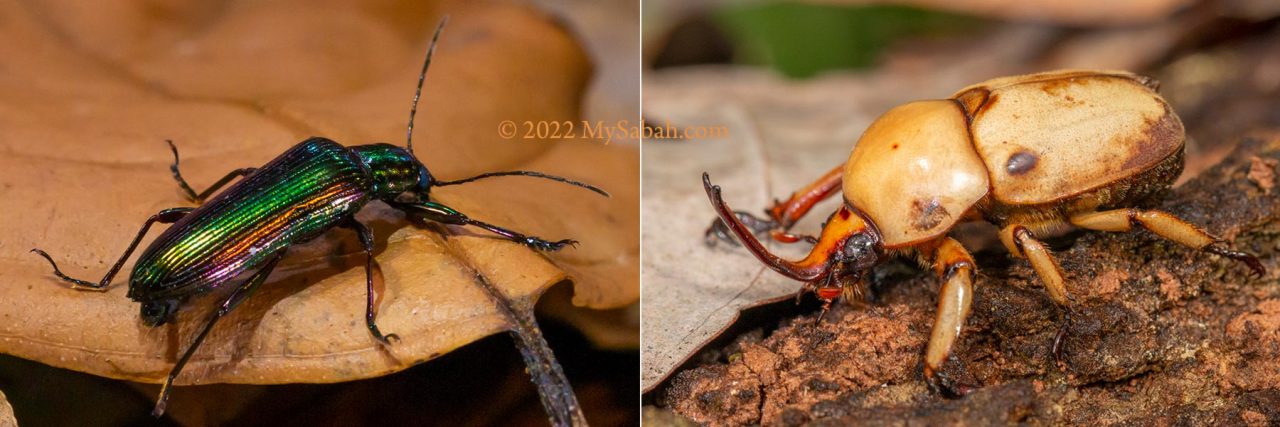
My Thoughts
Insects being insects, they just do what they ought to do. No insect is bad. Allah / God creates all living things for a purpose. The insects keep our earth balanced and healthy. It’s up to the people to choose if they want to appreciate bugs and become the next Satoshi Tajiri, or let the unjustified fear of insects turns them into a wuss.
“If all insects on Earth disappeared, within 50 years all life on Earth would end. If all human beings disappeared from the Earth, within 50 years all forms of life would flourish.” – Jonas Salk
Photos taken in Keningau, Sabah, Malaysia Borneo
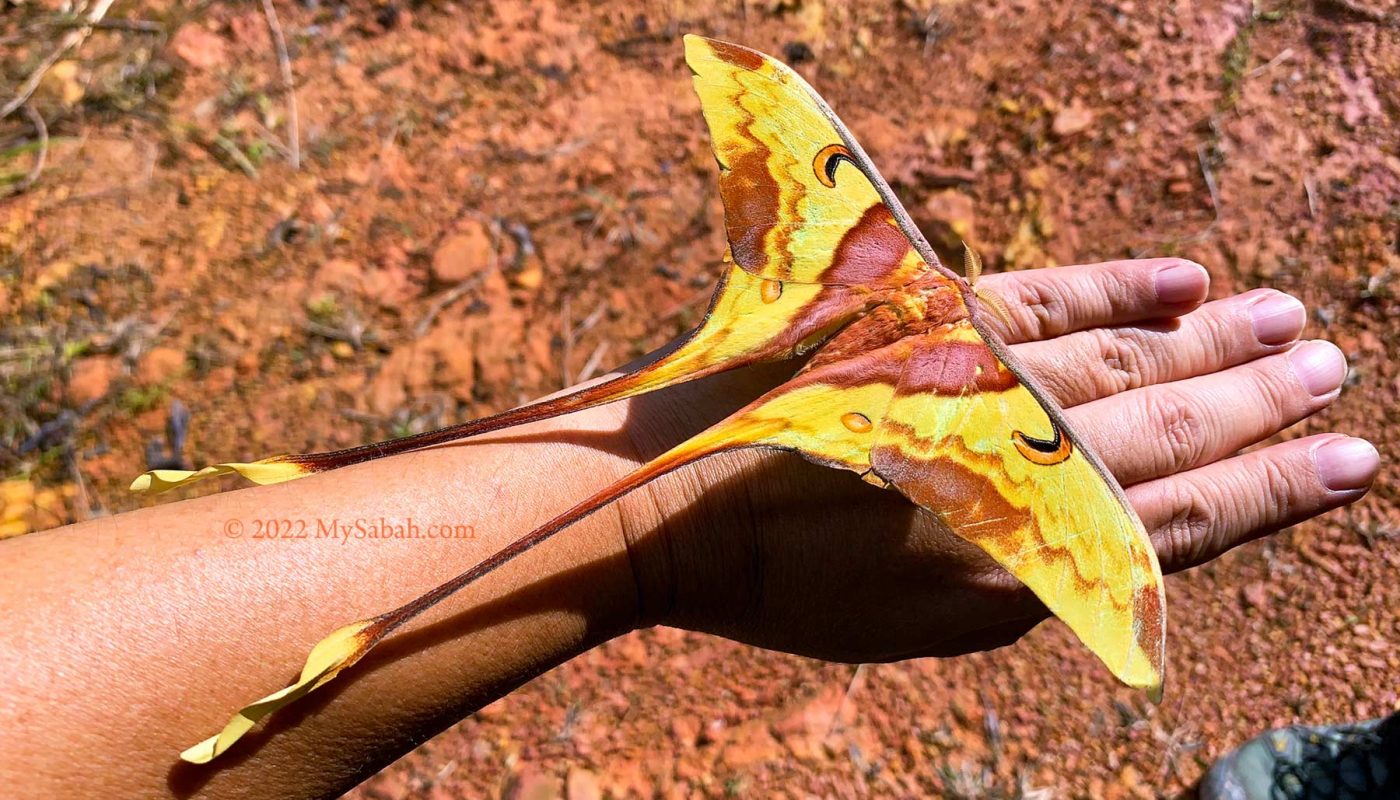


This is a most beautiful and peaceful place. 5 star
Indeed. I’ll go back again fairly soon.